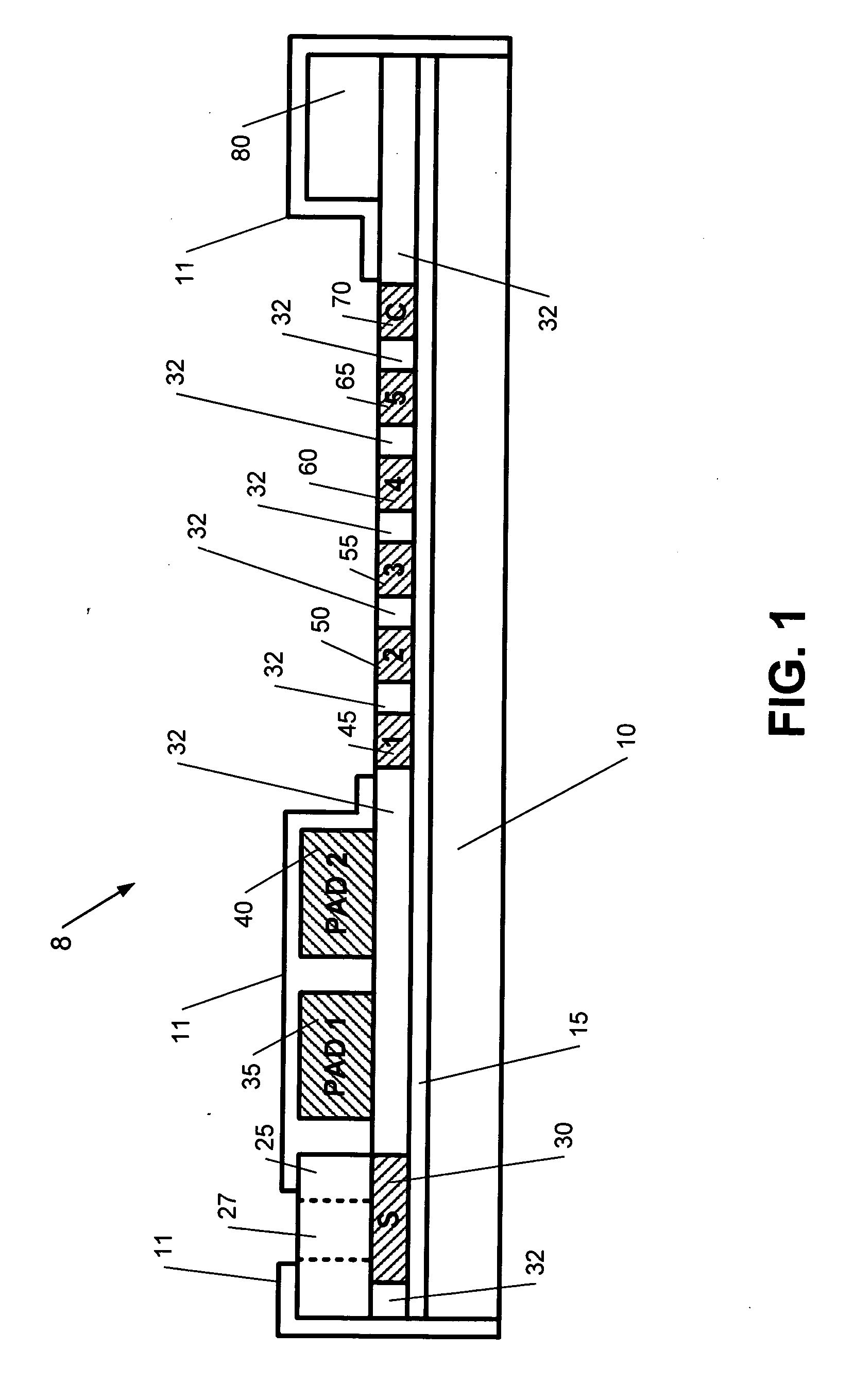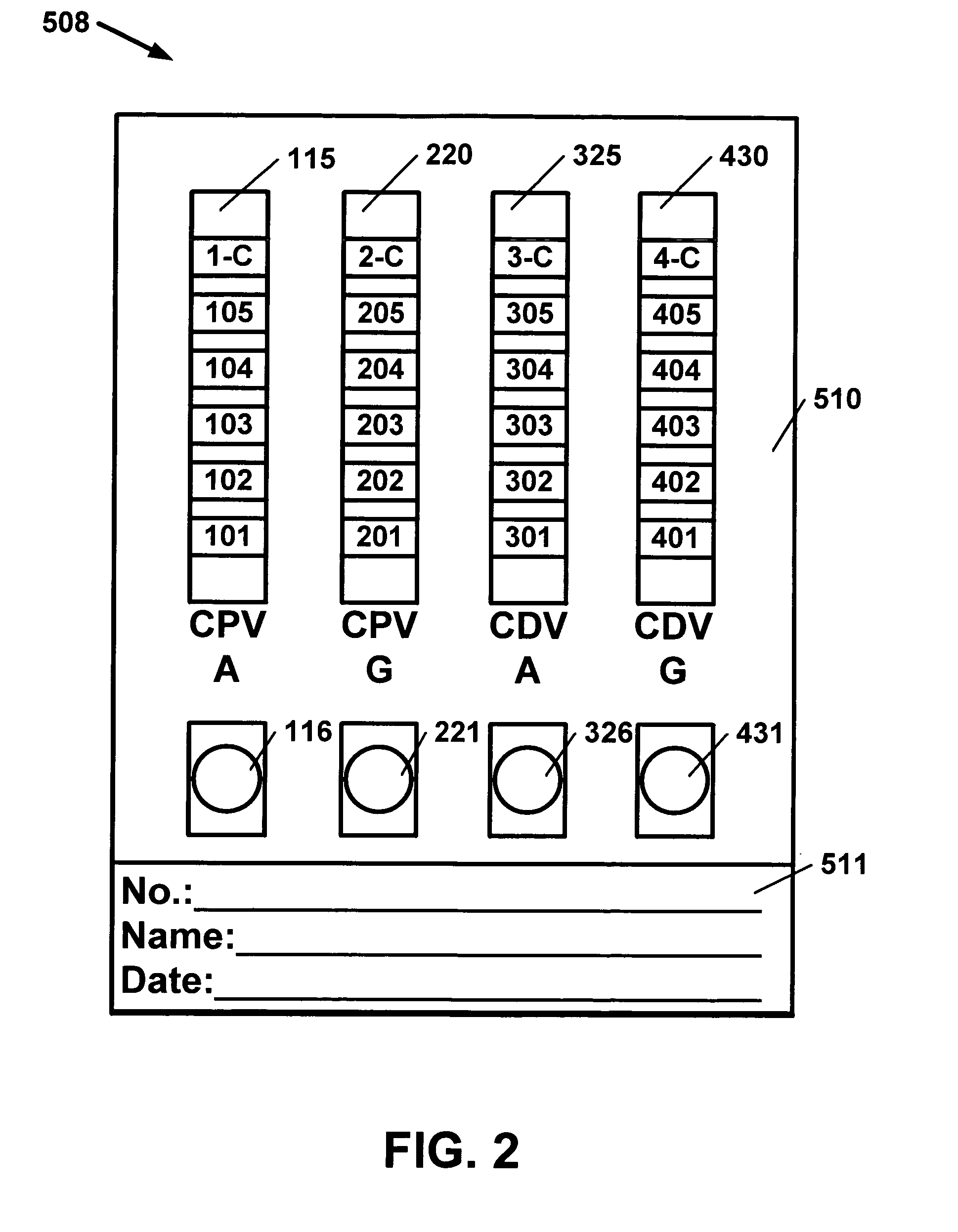Antibody detection method and device for a saliva sample from a non-human animal
a detection method and saliva sample technology, applied in the field of saliva sample detection methods and devices for non-human animals, can solve the problems of severe illness, significant morbidity and mortality, wolves, foxes,
- Summary
- Abstract
- Description
- Claims
- Application Information
AI Technical Summary
Benefits of technology
Problems solved by technology
Method used
Image
Examples
examples
[0048]CPV virus ligand is grown after the method of Oh (2006). CRFK cells (CCL-94; ATCC) are grown in Dulbecco modified Eagle medium (catalog no. 12100-046; Gibco) with 10% fetal calf serum (FCS) and gentamycin antibiotics until reaching a monolayer stage. C-780916 strain (VR-953: ATCC) are inoculated and grown in the CRFK cells with 2% FCS. The cells are grown until cytopathic effect (CPE) is noted, approximately 3-4 days. The cells are frozen and thawed 3 times. The harvested fluid is then centrifuged at 500×g in the cold for 15 minutes to remove large cellular debris. Formaldehyde was used by Oh, however, beta-propiolactone (BPL) has been shown to degrade the HA antigens less (Pollock, R V and Carmichael, L. E, 1982). BPL is used here for the reason just cited. The CPV, which is now inactivated is treated with polyethylene glycol 6000 (Sigma, St. Louis, Mo.) as described after Adams, 1973. The solution is allowed to stand in 0.4-0.6 M sodium chloride. The resulting solution is th...
PUM
| Property | Measurement | Unit |
|---|---|---|
| time | aaaaa | aaaaa |
| molecular weight | aaaaa | aaaaa |
| molecular weight | aaaaa | aaaaa |
Abstract
Description
Claims
Application Information
 Login to View More
Login to View More - R&D
- Intellectual Property
- Life Sciences
- Materials
- Tech Scout
- Unparalleled Data Quality
- Higher Quality Content
- 60% Fewer Hallucinations
Browse by: Latest US Patents, China's latest patents, Technical Efficacy Thesaurus, Application Domain, Technology Topic, Popular Technical Reports.
© 2025 PatSnap. All rights reserved.Legal|Privacy policy|Modern Slavery Act Transparency Statement|Sitemap|About US| Contact US: help@patsnap.com


